Radishes are among the easiest and fastest-growing vegetables in any home garden. But have you ever seen pink radishes? Their vibrant pink hue makes them not only a delight for the taste buds but also a feast for the eyes. Growing pink radish at home is simple, rewarding, and perfect for both beginners and experienced gardeners.
Inspired by the YouTube video “Growing Pink Radish Is Very Special, Very Beautiful And Very Delicious”, this article will guide you through everything you need to know to grow your own pink radishes — from sowing seeds to harvesting sweet, crisp roots.
By the end, you’ll discover why pink radish is special, how to grow it easily, and how to enjoy it fresh from your home garden.
Why Pink Radish Is Special

Pink radishes stand out due to their:
- Beautiful Appearance: Their bright pink skin and white flesh make them visually appealing in salads and garnishes.
- Unique Taste: Slightly sweeter and less pungent than traditional red radishes.
- Quick Growth: Radishes grow fast, often ready to harvest in 25–35 days.
- Compact Size: Perfect for small gardens, pots, or terrace gardening.
- Nutritional Value: High in fiber, vitamin C, antioxidants, and minerals.
These qualities make pink radishes an ideal choice for anyone looking to grow a beautiful and delicious homegrown vegetable.
Step 1: Choose the Right Variety
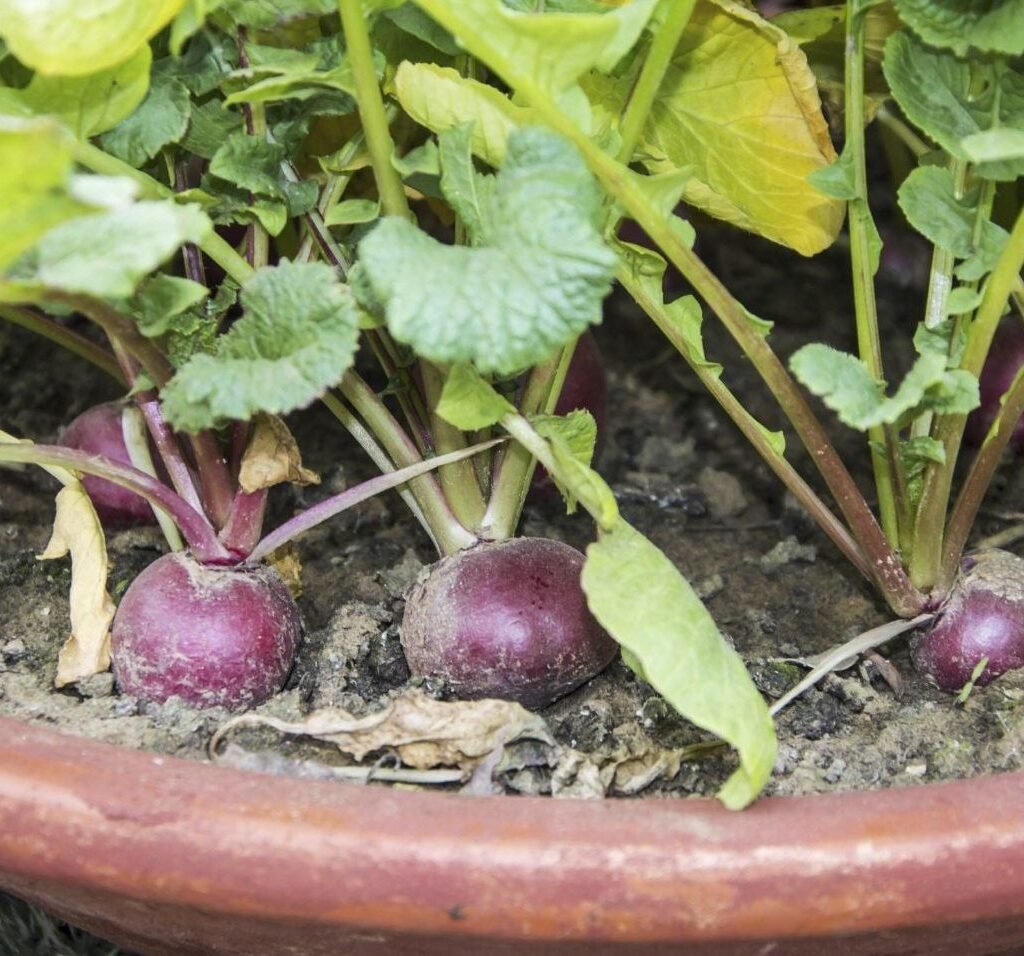
For the best results, select a pink radish variety suitable for home gardening. Some popular options include:
- Pink Beauty: Small, round, and sweet; perfect for salads.
- Cherry Belle: Classic round pink radish, fast-growing.
- Pink White Tip: Elongated radish with pink skin and white tip, flavorful and crunchy.
Choose fresh, high-quality seeds from a reliable nursery to ensure good germination and strong growth.
Step 2: Selecting the Perfect Growing Spot
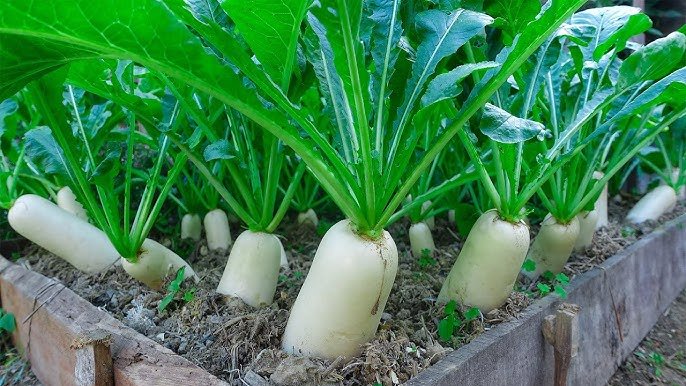
Pink radishes can grow in small spaces, containers, or open soil, making them ideal for urban gardens.
Sunlight Requirements:
- Need 4–6 hours of sunlight daily for healthy growth.
- Partial shade is acceptable, but full sun yields sweeter roots.
Soil Requirements:
- Loose, well-draining soil is essential for radish roots to grow straight and round.
- Avoid compacted or clay-heavy soil, which may produce misshapen roots.
For container gardening, choose pots or grow bags at least 6–8 inches deep.
Step 3: Prepare the Soil
The ideal soil for pink radish is nutrient-rich, slightly acidic to neutral, and loose.
Soil Mix Recommendation:
- 50% garden soil or composted soil
- 30% compost or well-rotted organic matter
- 20% sand or cocopeat for drainage
Tips for Fertility:
- Add bone meal or crushed eggshell powder to provide calcium.
- Mix in vermicompost to supply essential nutrients.
- Avoid high-nitrogen fertilizers — excess nitrogen promotes leaf growth over root development.
Step 4: Sowing the Seeds
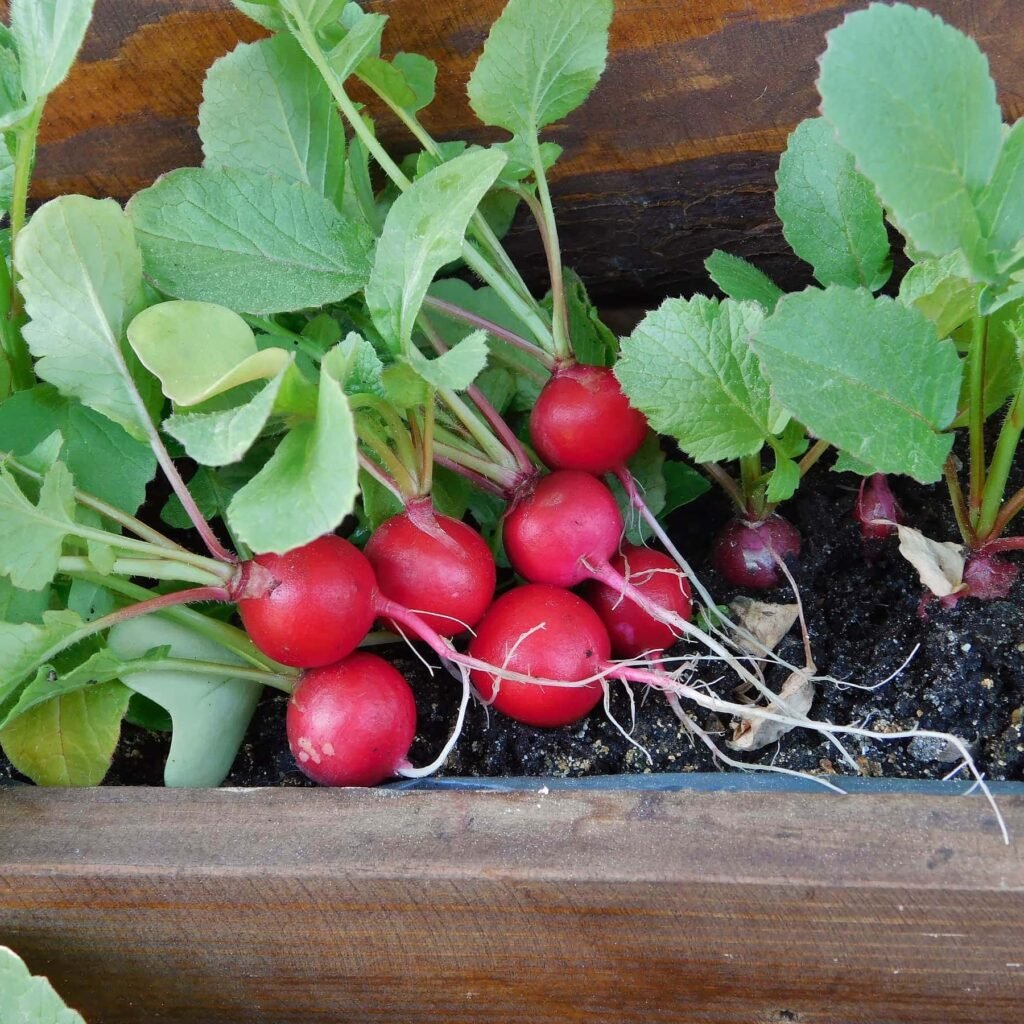
Pink radishes are easy to sow and grow.
Sowing Instructions:
- Loosen the soil in your container or garden bed.
- Make shallow furrows about ½ inch deep.
- Sow seeds thinly, spacing them about 1–2 inches apart.
- Cover lightly with soil and water gently.
Radish seeds germinate quickly, usually within 4–7 days, depending on temperature.
Step 5: Thinning Seedlings
Once the seedlings reach 2–3 inches tall, thin them to ensure proper root development:
- Remove weaker seedlings to leave 2–3 inches spacing between plants.
- Crowding prevents roots from growing large and can cause misshapen radishes.
Proper thinning ensures your pink radishes grow perfectly round and crisp.
Step 6: Watering Your Radishes
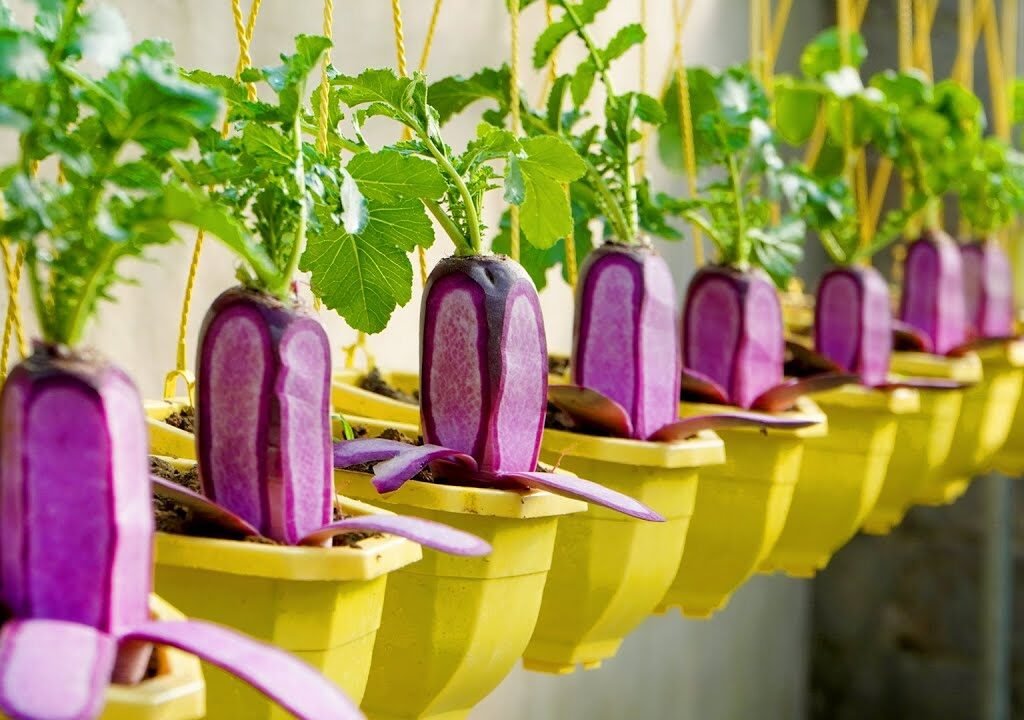
Consistent watering is key for juicy, tender radishes:
- Keep the soil evenly moist, but not soggy.
- Water lightly every 2–3 days, increasing frequency during hot weather.
- Mulch with straw or dry leaves to retain moisture and prevent soil cracking.
Uneven watering may lead to splitting or woody roots, so consistency is important.
Step 7: Feeding for Better Growth
Pink radishes are fast-growing but benefit from light feeding:
- Use liquid compost or vermicompost tea once a week for healthy growth.
- Avoid heavy chemical fertilizers — too much nitrogen reduces root quality.
- For added flavor, sprinkle banana peel powder or organic potassium-rich compost near roots.
Proper feeding enhances both taste and appearance.
Step 8: Sunlight and Temperature Considerations
Radishes thrive in cool to moderate temperatures (15–25°C / 59–77°F).
- Summer heat may cause roots to become woody or bitter.
- In hotter months, provide partial shade to keep the soil cool.
- Ensure 4–6 hours of sunlight daily for maximum sweetness and color.
A wall garden or terrace spot with filtered sun works perfectly.
Step 9: Pest and Disease Management
Pink radishes are hardy, but some pests and diseases can occur:
| Problem | Solution |
|---|---|
| Aphids | Spray neem oil weekly |
| Leaf miners | Remove affected leaves and use organic insecticidal soap |
| Fungal infections | Improve drainage and airflow, avoid water on leaves |
| Root maggots | Use floating row covers or plant companion crops like onions or garlic nearby |
Organic care keeps your radishes safe, healthy, and chemical-free.
Step 10: Harvesting Pink Radishes
The best part of growing radishes is harvesting — fast, rewarding, and satisfying.
When to Harvest:
- Most pink radishes are ready in 25–35 days after sowing.
- Harvest when roots reach 1–2 inches in diameter or as per variety.
- Pull gently to avoid breaking the root.
Tips for Sweetness and Flavor:
- Harvest regularly — leaving radishes in the soil too long can make them woody.
- Water consistently before harvest to keep roots juicy.
Step 11: Using Pink Radishes
Pink radishes are as versatile as they are beautiful:
- Salads: Slice thinly for a colorful crunch.
- Pickles: Quick pickling preserves their vibrant pink color.
- Garnishes: Perfect for soups, sandwiches, and platters.
- Juices: Can be added to vegetable or detox juices for flavor and nutrients.
Homegrown radishes have fresher flavor and better texture than store-bought ones, making every meal more enjoyable.
Step 12: Tips for Continuous Harvest
To keep a steady supply of pink radishes:
- Succession Planting: Sow new seeds every 10–15 days.
- Companion Planting: Plant radishes with carrots, lettuce, or spinach to optimize space.
- Soil Care: Add compost after each harvest to maintain fertility.
- Harvest Early: Regular picking encourages new growth and prevents overcrowding.
These practices ensure a beautiful, productive radish garden all season long.
Conclusion: Grow Special, Beautiful, and Delicious Radishes at Home
Pink radishes are more than just a vegetable — they are a visual delight and a nutritional powerhouse. With minimal space, a few seeds, and proper care, anyone can grow beautiful, juicy, and delicious radishes at home.
Whether in pots, containers, or a wall garden, pink radishes are perfect for beginners and seasoned gardeners alike. They teach the joy of homegrown food while adding color and freshness to your kitchen.
Start today, and discover the magic of growing special, beautiful, and delicious pink radishes right at your home — an easy and rewarding project that anyone can enjoy!
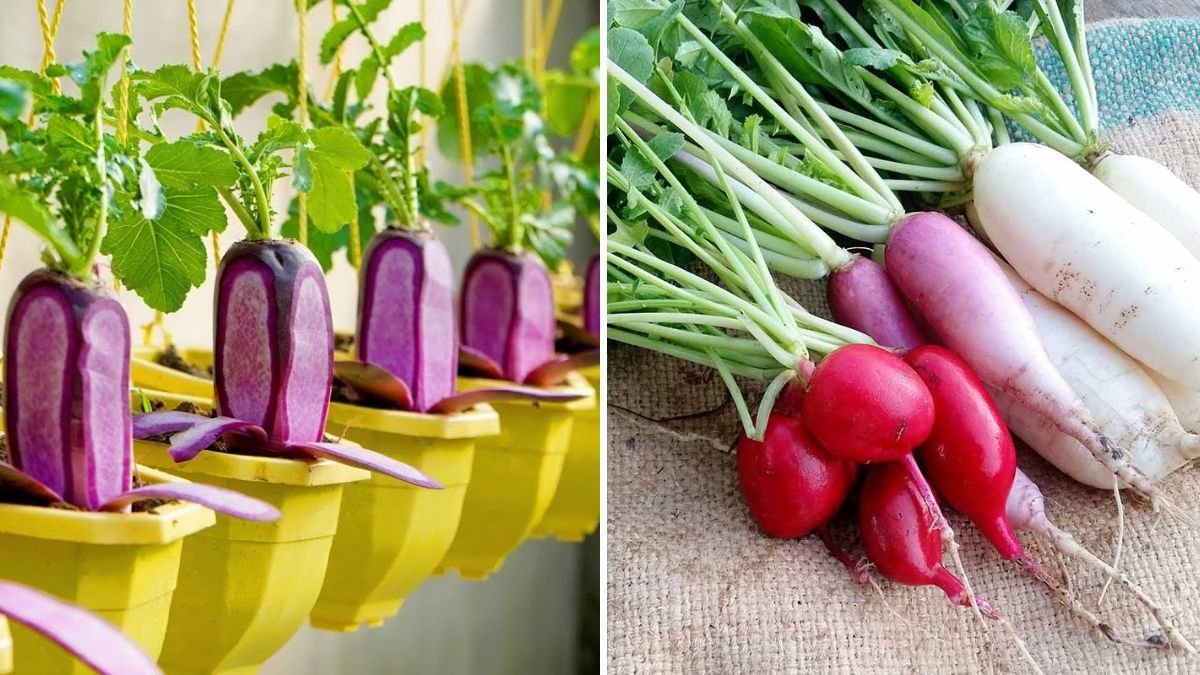





Leave A Comment